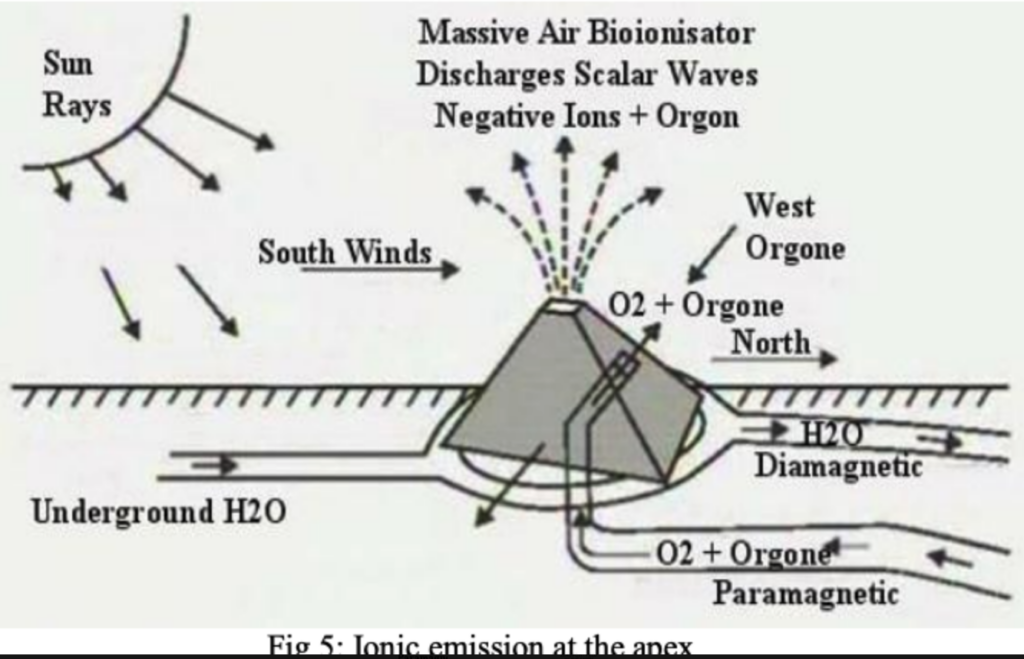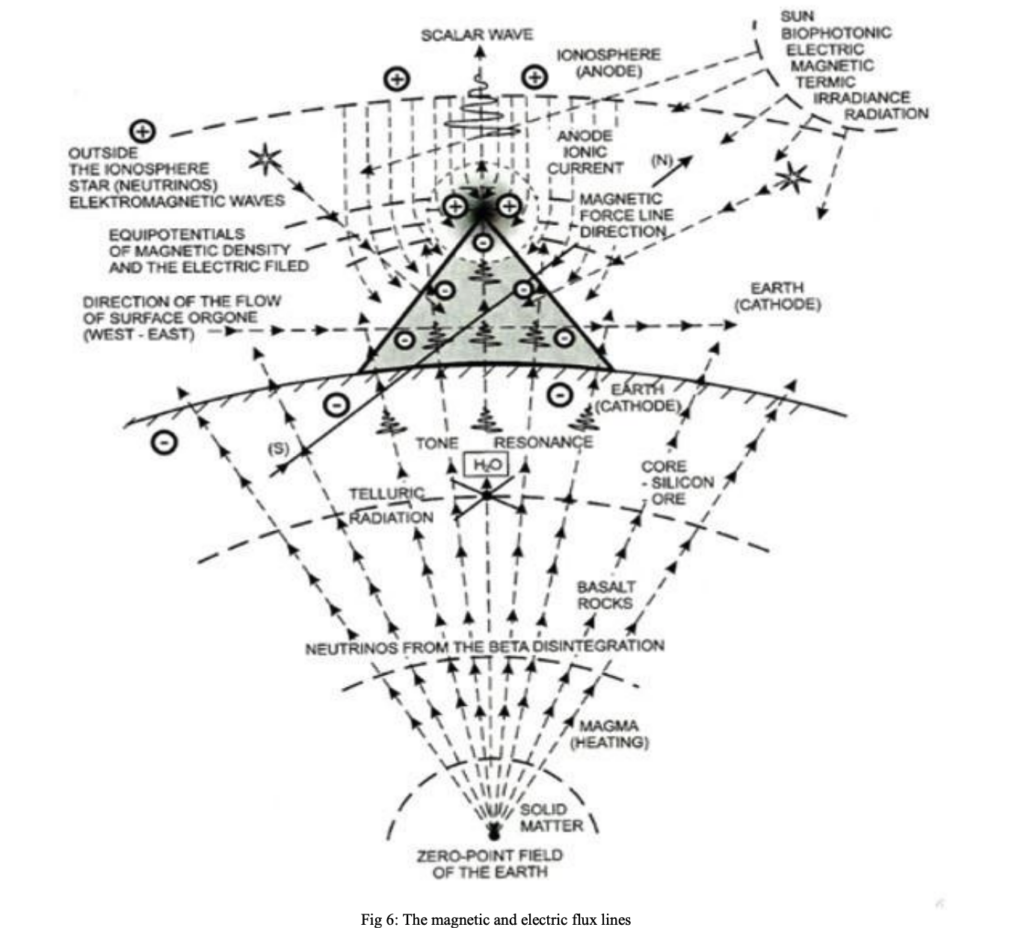The pyramids, especially the Great Pyramids of Giza, stand as some of the most astounding architectural feats in history. However, it's not just their colossal size and precision construction that baffle us; it's the profound understanding of energy and cosmology that the ancients seem to have possessed. The two diagrams provided hint at deeper scientific and esoteric significances of pyramid structures, well beyond their often-cited roles as tombs or monuments.

Harnessing the Energy of the Earth
The pyramids, as depicted in Fig 5, are shown as more than just structures. They function as massive energy conductors. The image alludes to the idea that these pyramids could harness sun rays and the underground water streams, further amplifying energies like "orgone" and emitting them through the apex. This process of capturing and redistributing energy might have served various purposes, from spiritual rituals to enhancing agricultural yields or even potentially aiding in health and longevity.
The "Orgone" mentioned in the diagram is reminiscent of Wilhelm Reich's concept of an omnipresent life energy. Whether or not the ancients called it "orgone," it's clear they had a belief in harnessing some form of life energy through their monumental constructions.
Magnetic and Electric Synchronicity

Fig 6 dives deeper into the world of cosmic and terrestrial energies. It presents the pyramid as a central hub, interacting with the Earth's core, magnetic fields, and even cosmic forces like neutrinos and scalar waves. The pyramids, according to this representation, synchronize with the Earth's magnetic and electric flux lines, essentially turning these stone giants into resonators of cosmic and terrestrial energies.
The meticulous placement of pyramids on certain ley lines or energetic nodes around the Earth further emphasizes the idea that ancient civilizations had a profound knowledge of the planet's energetic grid.
Historical Context
Historically, pyramids were primarily viewed as grand tombs for pharaohs, monumental testimonies to powerful leaders. But with diagrams like these and emerging interdisciplinary research, our understanding is evolving. Could the ancients have known about energies and forces that our modern science is only beginning to grasp? The historical importance of pyramids, then, might not just be as tombs or symbols of power. They could represent ancient centers of wisdom, science, and spirituality, integrating a deep understanding of the universe's forces into their design.
Conclusion
While the architectural prowess of ancient civilizations remains undisputed, these diagrams suggest that there's much more to uncover about the pyramids. Beyond being mere structures of historical significance, they might be keys to understanding how the ancients interacted with and harnessed the universe's energies. And as we delve deeper into the mysteries of the cosmos, it's intriguing to think that some answers might lie in the ancient stones of pyramids, standing silently through millennia, waiting for us to decipher their secrets.

